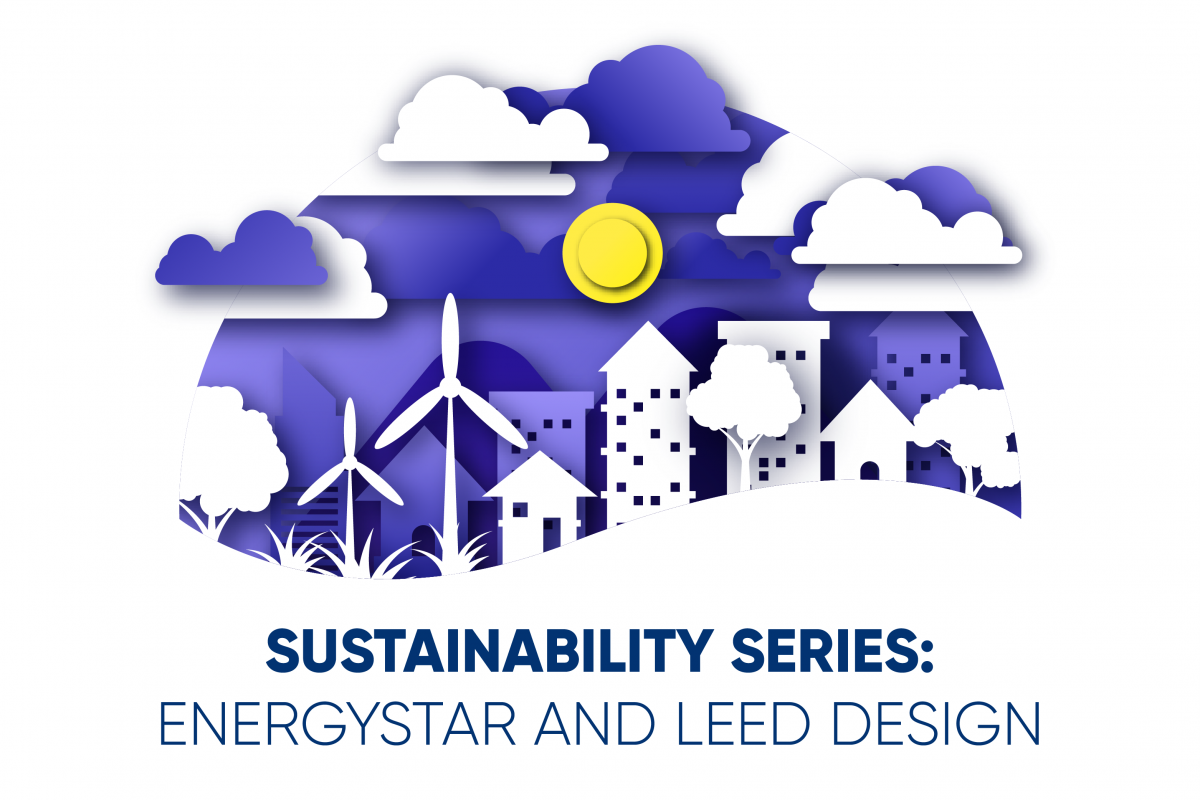By designing sustainably, we can work to reverse climate change impacts and ensure quality of life is preserved for future generations
BY: DONNA MARION, AIA, LEED AP BD+C
EnergyStar vs. LEED Design Principals
ENERGY STAR® is a joint program of the Environmental Protection Agency (EPA) and the Department of Energy (DOE). Its goal is to help consumers, businesses, and industry save money and protect the environment through the adoption of energy-efficient products and practices. [Source]
LEED (Leadership in Energy and Environmental Design) is the most widely used green building rating system in the world. Available for virtually all building types, LEED provides a framework for healthy, highly efficient, and cost-saving green buildings. LEED certification is a globally recognized symbol of sustainability achievement and leadership. [Source]
Tell me more
EnergyStar is used for buildings, products, and residences in order to use less energy, cause fewer emissions that contribute to climate change, and save cost. Some entities require EnergyStar certification, including schools in New Mexico funded by PSFA.
LEED is used by many entities across a range of scales, including universities, government agencies, businesses, tenants, facility managers, and individual home owners. Designing to LEED standards benefits building users, building owners, and the larger community by promoting sustainable designs, healthy occupant spaces, and the green economy.
LEED has different rating systems that apply to different types of projects, existing and new, which are:
- LEED BD+C (Building Design + Construction)
- LEED O+M (Operations and Maintenance)
- LEED ID+C (Interior Design + Construction)
- LEED for Neighborhood Development
- LEED for Homes Rating Systems
When would I use it on a project?
EnergyStar is appropriate for any project where energy efficiency, minimizing energy use, and minimizing the project’s carbon footprint are priorities. It can be applied to new and existing buildings.
LEED is appropriate for projects that want to prioritize environmental stewardship, enhance human health, protect natural resources, and build a greener economy.
To qualify as a LEED project, in addition to meeting prerequisites and a certain number of credits, projects must also meet these minimum program requirements:
- The project must be in a permanent location on existing land;
- The project must use reasonable LEED boundaries;
- The project must comply with project size requirements (for example, BD+C projects must be a minimum of 1,000 SF of gross floor area.)
Why is this important?
Energy efficiency is an important strategy to reduce the carbon footprint of projects and products in the effort to reverse climate change. EnergyStar provides the tools and guidance to improve energy efficiency and reduce cost by virtue of less energy usage.
The built environment is a significant contributor of greenhouse gas emissions and the unsustainable extraction of nonrenewable resources. Projections indicate that by the year 2030, human beings will be using 2 earth’s worth of resources every year, meaning it will take two years to replenish the resources used in a single year. If this continues unmitigated, climate change impacts will increase and cause major disruptions to the ecosystems that humans and other species rely on for survival. By designing sustainably, we can work to reverse climate change impacts and ensure quality of life is preserved for future generations.
Let’s Summarize
EnergyStar specifically focuses on energy efficiency and energy use reduction and can be applied to products or buildings. EnergyStar provides tools to evaluate energy performance and a checklist to guide design teams as they work towards greater energy efficiency.
LEED emphasizes an integrative design process which brings all relevant parties to the table from the design, operations, construction, and owner/user perspectives. This collaborative approach fosters interdisciplinary collaboration at early design stages where sustainable opportunities are most available.
LEED awards certification at different levels (Certified, Silver, Gold, and Platinum) based on the number of credits achieved across these categories: Integrative Process, Location and Transportation, Sustainable Sites, Water Efficiency, Energy and Atmosphere, Materials and Resources, Indoor Environmental Quality, and Innovation. Additional points are awarded based on the priorities in each region through the Regional Priority category.
Donna Marion, AIA, LEED AP BD+C
Donna sees architecture as the balance of tension between technical needs and design possibilities; one that has the unique ability to benefit the common good. She takes pride in her work and enjoys seeing the positive impact that architects have on their communities.




